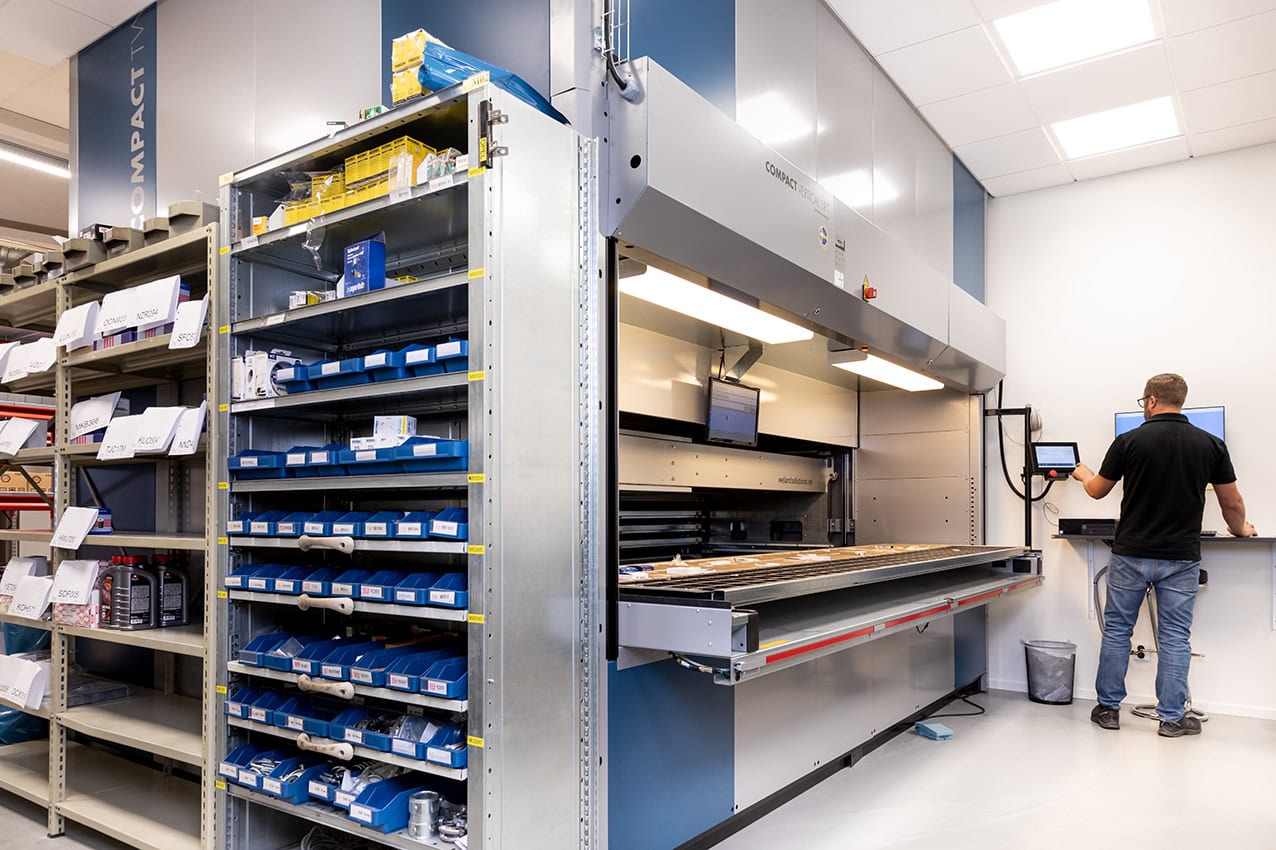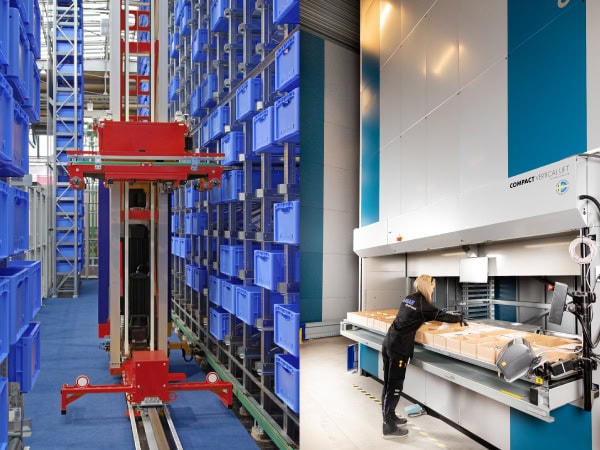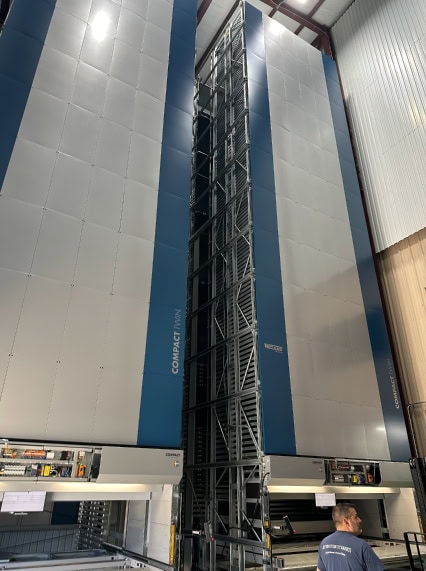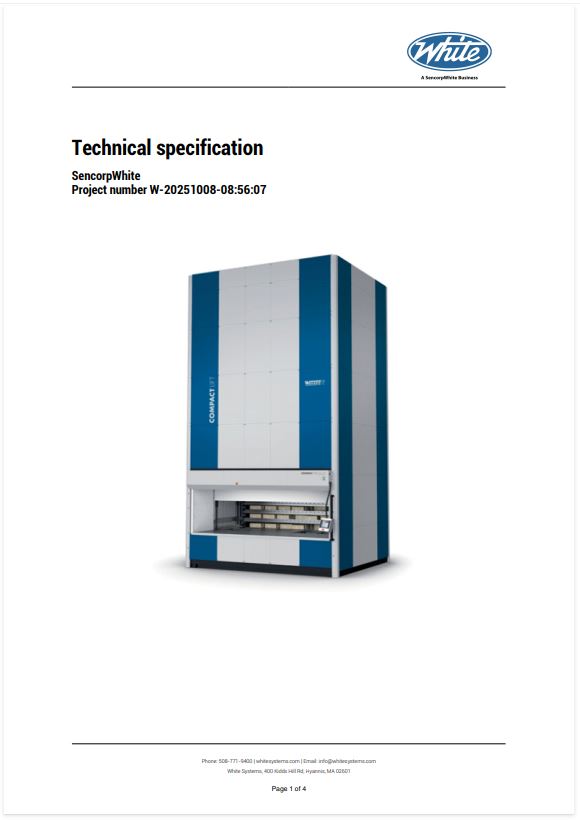Why manufacturers, warehouses, and MRO teams don’t need a multimillion-dollar ASRS to compete

“Goods-to-person” is having a moment again. Everyone in the automation space is using the term because labor is expensive, floor space is tight, and speed-to-operator matters more than ever. But when most people hear “GTP,” they picture a massive, high-cost ASRS with shuttles, robots, and multi-level infrastructure.
That assumption is outdated. Vertical Lift Modules (VLMs) and vertical carousels have always been goods-to-person systems, and they deliver the same core advantages at a fraction of the cost and footprint.
The Misconception: GTP Requires a Full-Scale ASRS
There’s a widespread belief that GTP solutions require:
- Seven-figure automation budgets
- Major facility renovations
- Months of engineering and integration
- Robotics, mezzanines, and conveyor networks
Those setups can make sense for enterprise-level fulfillment operations shipping thousands of SKUs an hour. But most manufacturing, service, aerospace, and parts facilities don’t need that level of infrastructure to solve their challenges. What they need is a faster, denser, easier-to-implement system that doesn’t require rebuilding a facility or blowing up a capital plan.


The Reality: VLMs and Carousels Are Goods-to-Person Automation
VLMs and vertical or horizontal carousels deliver the exact workflow GTP is built around:
- Inventory is brought directly to the operator
- Travel time and walking are eliminated
- Items are stored in high-density, secured space
- Throughput, accuracy, and ergonomics all increase
- Labor requirements and search time drop significantly
No shuttles. No mezzanines. No robots. Yet the outcome is the same: the product moves to the picker instead of the picker chasing product.
Cost-Efficient GTP for the Mid-Market
VLMs and carousels deliver goods-to-person benefits without the price tag or footprint of a full ASRS. They’re especially effective for:
- Manufacturing and MRO
- Aerospace and defense
- Healthcare and medical device facilities
- Parts departments and service centers
- Distribution, kitting, and repair operations
A shuttle-based GTP system can run $1M to $4M before integration. A VLM or carousel delivers the same functional advantages for a fraction of that investment, with shorter lead times and smaller installation windows.
Faster ROI, Smaller Footprint, Easier to Deploy
With VLMs and carousels, companies gain GTP advantages without heavy infrastructure:
✅ Fraction of the cost of traditional ASRS or cubic ASRS
✅ Installation without disrupting operations
✅ Fits tight spaces and low ceilings
✅ Integrates with existing WMS/ERP systems
✅ Scales one unit at a time instead of an all-or-nothing approach
✅ Delivers ROI in months, not years
They directly address the biggest pressures driving the GTP conversation:
Space – Reclaim up to 85% of floor space
Labor – Reduce travel time and improve pick efficiency
Accuracy – Minimize human error and improve control
Why GTP Is Surging Right Now
The rise in interest is tied to real business conditions:
- Reshoring and onshoring are increasing storage demands
- Labor shortages aren’t easing
- Building expansions are costly and slow to approve
- Inventory visibility and traceability matter more
- Orders are smaller, faster, and more frequent
Companies don’t have room for inefficiency. GTP solves the problem, and it doesn’t have to look like a million-dollar shuttle system to do it well.
VLMs and Carousels Aren’t “Entry-Level” — They’re the Practical Form of GTP
These systems deliver goods-to-person efficiency in a format that works for the majority of real-world operations. They make GTP achievable without the cost, complexity, or disruption of a traditional ASRS.


Want GTP Without the GTP Price Tag? Build Your Own VLM in Minutes.
Use our online configurator to design a system and see how much space, labor, and time you can save—without committing to a full ASRS.
Start with the configurator and bring goods-to-person to your floor on your terms.
